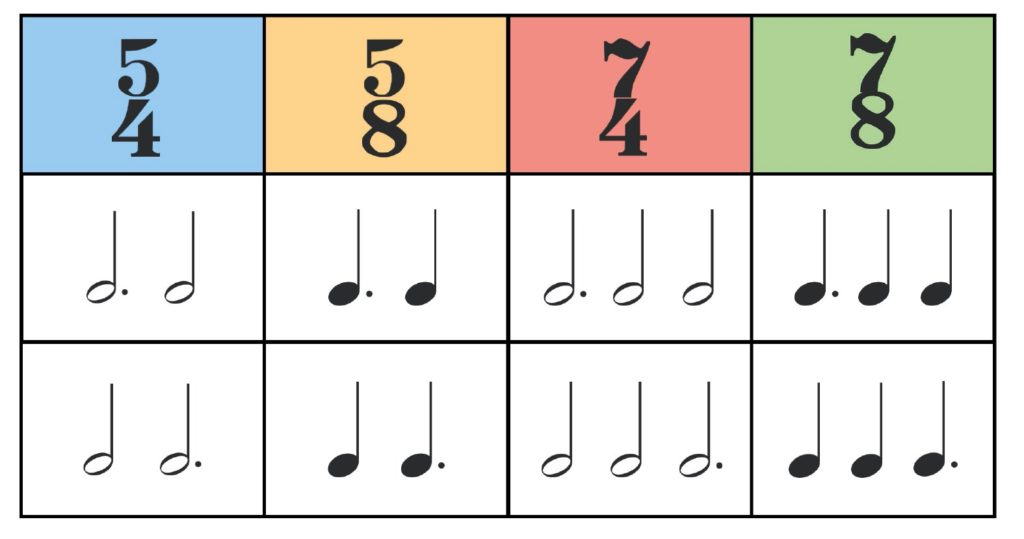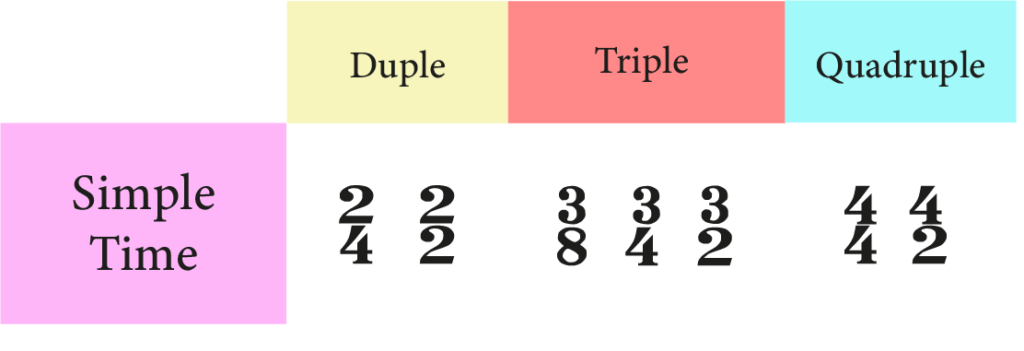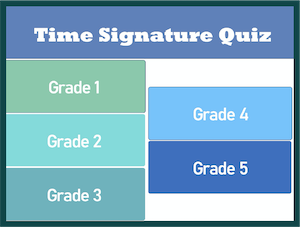To earn top marks in your ABRSM exam you need to have a good understanding of Grade 5 Music Theory Time Signatures. Irregular time signatures are the only ones that are specific to Grade 5, however you still need understanding all the time signatures from grade 1-4. These include all common simple and compound time signatures.
So, it in the interest of completeness we have listed them below for you. For a in-depth look at exactly what a time signature is, check out our beginners guide to time signatures.

Grade 5 Music Theory time Signatures
Irregular Time Signatures (new for Grade 5)
This group of time signatures are new to grade 5. Unlike simple and compound time, irregular time signatures have strong beats that do not divide equally. Have a look at each individual time signature to see how they work. For a more in-depth guide se our guide to irregular time signatures.
5/4 time
This time signature is made up of 5 crotchet per bar, or 5 quarter notes per measure. These notes can be grouped into strong beats in two different ways: 3-2 or 2-3. It’s important to remember that a piece of music will not change the way it is grouped. You can work this out from how notes in the melody are grouped and by looking at beaming.

7/4 Time
This time signature contains 7 crotchet beats in each bar, or 7 quarter notes per measure. These can be grouped into three strong beats, either as 3-2-2 or as 2-2-3. These are the only two groupings for 7/4 and the three-crotchet-strong-beat cannot go in the middle.

5/8 Time
5/8 has five quaver notes per bar, or five eighth notes per measure. These notes can be grouped into two strong beats either as 3-2 or as 2-3.

7/8 time
This time signature has seven quaver beats per bar or seven eighth notes per measure. They are grouped into two strong beats as either 3-2-2 or 2-2-3. Remember that the dotted crotchet beat cannot go in the middle of the bar. We cannot have 2-3-2.

Simple Time signatures
Simple time signatures have strong beats that can divide into two. For example 2/4 time has two crotchet beats per bar (or 2 quarter notes per measure). These two crotchet beats can be divided into two quavers each, making this a simple duple time signature.
For Grade 5 Music Theory you need to understand all of the below time signatures.

Compound Time Signatures
For Grade 5 you need to understand all of the main compound time signatures. Compound time signatures have strong beats that divide into three.
For example, with 6/8 time we have 6 quaver notes per bar (or 6 eighth notes per measure). These 6 notes are grouped into two strong beats of three quavers.
If we look at 12/8 too, this time signature has 12 quaver notes per beat. They are grouped into four strong beats, each one with three quavers. We would count music in 12/8 as 1…and…a…2….and..a..3…and…a….4….and…a.

For a more detailed look at this see our article on the differences between simple and compound time.
Want to see the whole curriculum for ABRSM music theory exams? See the complete ABRSM music theory syllabus.
Test your Knowledge
That’s it for grade 5 music theory time signatures. Remember that it’s one thing know what to learn, it’s quite another to actually understanding all these time signatures. If you feel like testing your knowledge, check out our time signatures quiz. This includes 5 separate quizzes for grade 1-5.

